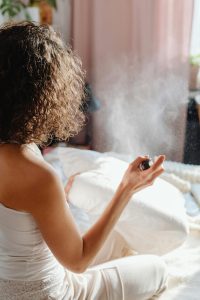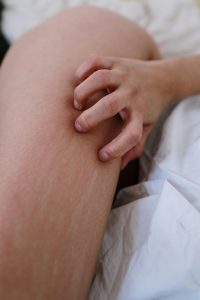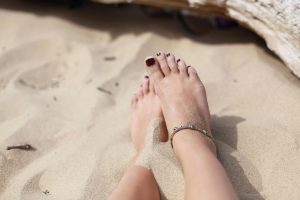Lice are small, parasitic insects that can infest the scalp, body, or other areas of the skin. They are a common problem, especially in children, and can cause itching and discomfort. Lice are highly contagious, but they do not pose serious health risks beyond the irritation and potential secondary infections they can cause. Understanding how lice spread, their symptoms, and how to treat and prevent them can help you address the problem effectively.
What Are Lice?
Lice are tiny insects that feed on human blood. There are three main types of lice that can affect humans:
- Head Lice (Pediculus humanus capitis): These lice infest the scalp and hair, most commonly affecting children. Head lice are the most common type found in schools and daycare centers.
- Body Lice (Pediculus humanus corporis): These lice live on clothing and move to the skin to feed. Body lice are less common than head lice and are typically associated with poor hygiene or living conditions.
- Pubic Lice (Pthirus pubis): These lice infest the hair in the genital area but can also be found in other coarse body hair such as armpits, chest, and legs. Pubic lice are usually spread through sexual contact.
Symptoms of Lice Infestation
The symptoms of a lice infestation can vary depending on the type of lice and the severity of the infestation. Common symptoms include:
- Itching: The most common symptom, caused by an allergic reaction to the bites. Itching typically occurs on the scalp for head lice, but it can affect other areas of the body for body and pubic lice.
- Visible Lice or Eggs: In the case of head lice, you may see the lice moving in the hair or notice eggs (nits) attached to hair shafts, especially near the scalp. Nits are small, oval-shaped, and often yellowish or white.
- Red Bumps or Sores: Scratching the affected area can cause red bumps, sores, or scabs. In the case of body lice, you might also notice sores or a rash on the skin where the lice have been feeding.
- Feeling of Movement on the Skin: Some people with lice may feel like something is crawling on their skin, especially when they are infested with body or pubic lice.
How Do Lice Spread?
Lice are highly contagious and can spread through several ways:
- Direct Head-to-Head Contact: Head lice spread most commonly through direct contact, such as when children are playing closely together at school or daycare.
- Sharing Personal Items: Lice can be transmitted by sharing items like hats, combs, hairbrushes, or headphones. Body lice can also spread through contaminated clothing or bedding.
- Close Contact in Crowded Settings: Body lice are more common in people who live in overcrowded conditions or who have limited access to clean clothing and bedding.
Treatment for Lice
While lice can be troublesome, the good news is that they are treatable. Here are some common approaches:
- Over-the-Counter (OTC) Treatments: There are various topical treatments available at pharmacies, including shampoos, creams, and lotions containing permethrin, pyrethrins, or other insecticides that are effective against lice. Follow the instructions carefully to ensure proper use.
- Prescription Medications: If OTC treatments don’t work or if the infestation is severe, your doctor may prescribe stronger treatments, such as malathion or spinosad. These treatments may be necessary if you have resistant lice.
- Manual Removal: Comb your hair with a fine-toothed nit comb to remove lice and eggs. This method is best used in combination with medicated treatments.
- Cleaning Clothes and Bedding: Lice can survive off the human body for a short time. Wash clothing, bedding, hats, and other items that may have come into contact with lice in hot water and dry them on a high heat setting. Items that cannot be washed can be sealed in a plastic bag for at least two weeks.
- Shaving: In rare cases, especially for pubic lice, shaving the affected area can help to eliminate the lice, although it is not always necessary.
Preventing Lice Infestation
While lice are difficult to prevent completely, there are several steps you can take to reduce the risk of getting or spreading lice:
- Avoid Head-to-Head Contact: Limit close contact with individuals who have lice, particularly in environments like schools or daycare centers.
- Do Not Share Personal Items: Avoid sharing combs, hats, hair accessories, or clothing with others. Be especially cautious in public places or crowded settings.
- Regular Hair Checks: For children, regularly check the scalp for signs of lice or nits, particularly behind the ears and at the nape of the neck. Early detection and treatment can prevent the spread of lice to others.
- Encourage Good Hygiene: Teach children to avoid sharing clothing or personal items and to practice good hygiene, especially washing clothes and bedding frequently.
- Clean Living Spaces: Regularly clean and disinfect items that may come into contact with lice, such as furniture, pillowcases, and blankets.
When to Seek Medical Attention
In most cases, lice infestations can be treated effectively with over-the-counter treatments. However, you should seek medical attention if:
- The lice persist despite treatment.
- The scalp becomes infected or develops sores from excessive scratching.
- You experience allergic reactions to the lice treatment.
- You suspect pubic or body lice and need guidance on proper treatment.
Managing Lice with Igaku
At Igaku, we offer expert consultations for managing lice infestations and can provide guidance on effective treatments. Whether you need a prescription for stronger treatments or have questions about lice prevention, our medical professionals are ready to help. You can visit us at our clinics for in-person consultations, or reach out to us via WhatsApp for convenient teleconsultations. Don’t wait—contact us for expert care and advice on lice management today!
Read our other articles here.






